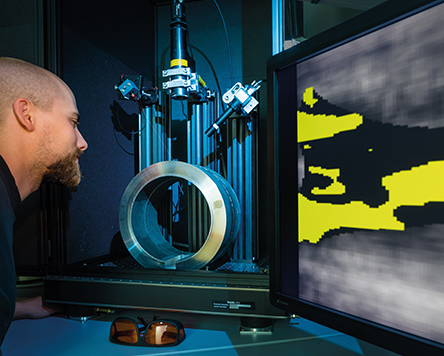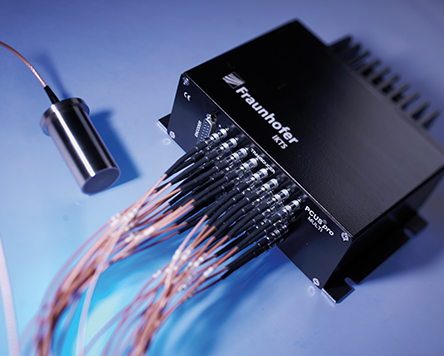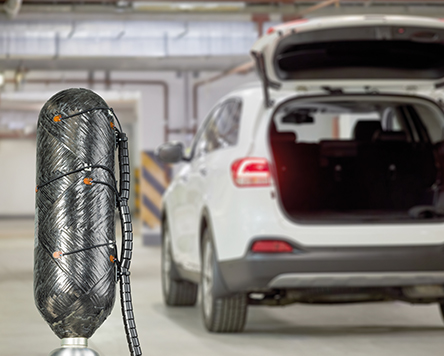
Non-destructive testing and monitoring

Areas of application
Development of methods for new applications in traditional NDT
The energy and mobility sector, as a typical field where NDT is used, is currently undergoing massive change. Novel materials and composites, as well as components with optimized properties, are constantly being introduced. New manufacturing processes, such as additive manufacturing, are rapidly evolving. This results in changes in the material behavior, special characteristics, new types of defects and increased demands concerning the testability using non-destructive methods.
Fraunhofer IKTS is therefore working diligently on adapting existing test procedures and methods. Well-known methods are improved through new electronic equipment and sensor concepts, and continuously developed further with a view to robot-aided testing – exemplified prominently by the PCUS® series of ultrasonic test devices. Another approach is the combination of several established methods with the aim of improving the yield of information thanks to data fusion.
The development of completely new methods is yet another avenue of research. The HUGO ultrasonic goniometer is an example. Using the newly developed goniometer method, it becomes possible to greatly increase the measuring sensitivity of the test system, allowing to determine material properties, such as solidification or stresses, with high accuracy.
A third strategy is based on the use of augmented reality solutions and exoskeletons to support manual test tasks. Production data are directly integrated within the AR applications, which decreases error rates in production and increases productivity.
Integrated quality control for processes and plants
The continuous monitoring of critical component parameters is paramount for operating individual manufacturing steps or complete processes efficiently within tight tolerances and without errors. In this regard, the sensors offered by IKTS can not only be installed at the machinery, it is also possible to integrate them directly in components or carry them along through processes.
Through their direct interaction between signal and material, NDT methods are an outstanding solution to gaining information on stiffness, structure or freedom from defects. In conjunction with machine and ambient parameters, this information allows, first of all, for regulation on the machine level. If data are then combined on the process or factory levels, it becomes possible to optimize production processes with regard to output, cost and energy consumption. In detail, this requires that data rates of the sensor signals and a possible pre-treatment (edge processing) of the signals be taken into consideration as well.
Fraunhofer IKTS has unique experience in the field of acoustic monitoring. Filtering and arithmetic transformations are decisive steps to be performed before assessment or classification with methods of machine learning.
Methods and systems for permanent monitoring of components and structures
Critical elements of energy, building and traffic infrastructure, such as wind power plants, bridges, railway lines, trains or airplanes need to be monitored regularly and maintained depending on their state or condition. Difficult accessibility, great distances and harsh environmental conditions impair an accurate assessment. Also, the need for staff leads to high costs.
As an alternative approach, Fraunhofer IKTS develops methods and systems for the permanent condition monitoring based on active and passive acoustic methods. It involves the integration of particularly robust, durable and reliable sensors and electronic parts into the components. Ideally, they remain there throughout the whole service life of the component, regularly supplying data on the component’s or system’s condition at defined intervals. Aspects of energy supply or self-sufficiency, data retrieval and secure transmission are also taken into account. This innovative approach is able to cover various cost-benefit scenarios from the perspective of the different players in the value chain.


